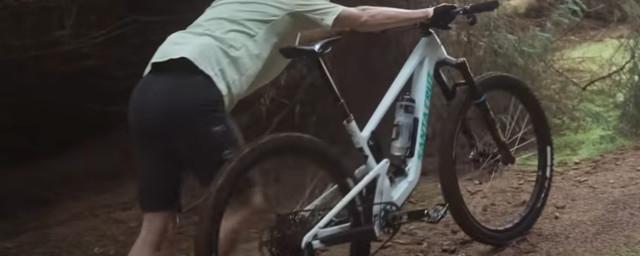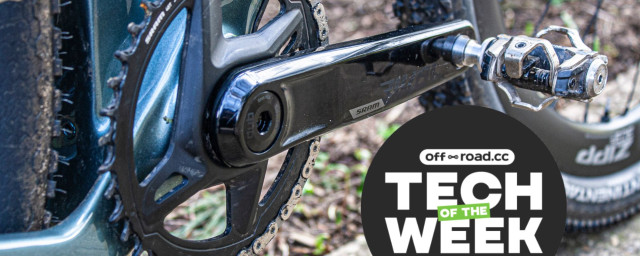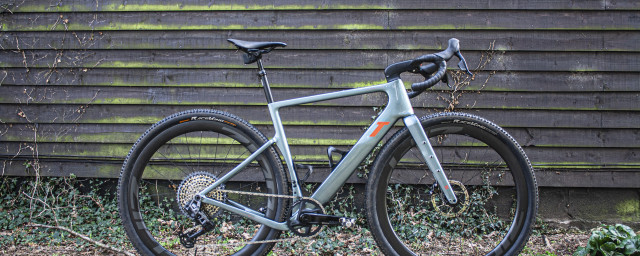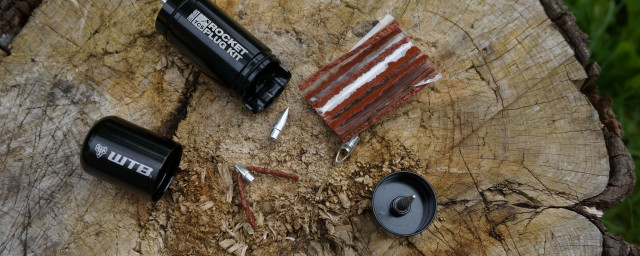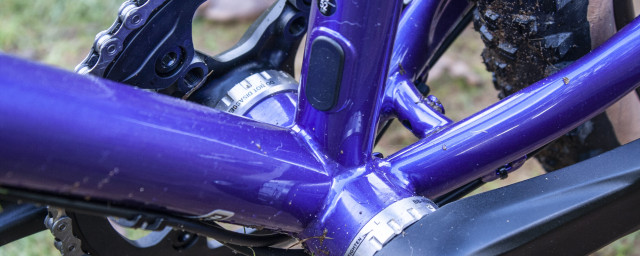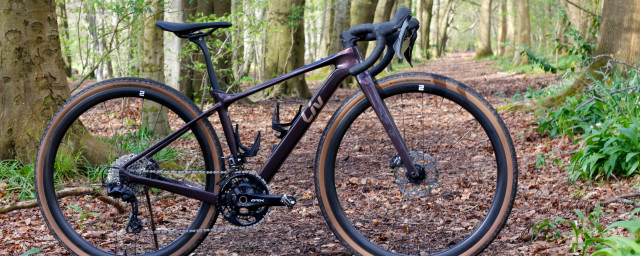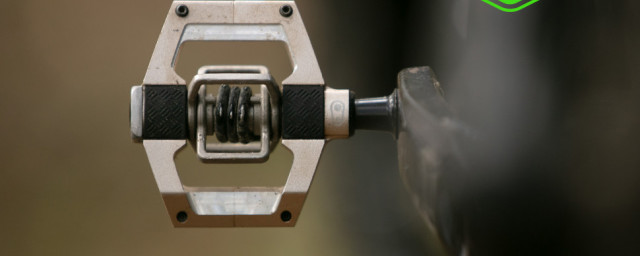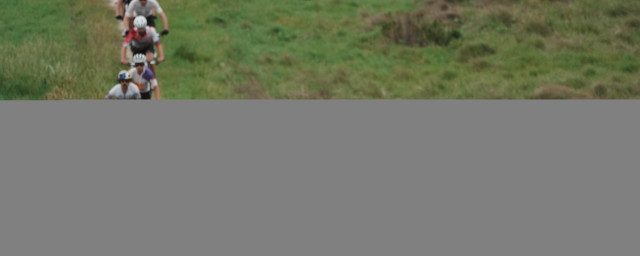POC’s M's Signal All-Weather Jacket is a three-layer lightweight waterproof jacket packing some unusual safety technology that'll come in handy should you be incapacitated, and a large rear pocket that acts as a bar mountable stash bag. The slim athletic fit will appeal to gravel riders and its waterproof performance will inspire you to keep going regardless of the rain. It is certainly not cheap but the quality is very good.
- 10 pieces of essential mountain bike clothing for beginners
- Leatt MTB Trail 3.0 insulated jacket review
-
Best mountain bike jackets 2024 - Top weatherproof options for men and women
POC M's Signal All-Weather Jacket - Technical details
POC’s Signal jacket is made from an unspecified fabric with a three-layer construction meaning that there is a waterproof, windproof and breathable membrane sandwiched between an outer more durable ripstop face layer with a DWR coating. There is also an inner fabric layer to deliver the best feel against the skin and help protect the membrane.
The Signal claims waterproof and breathability figures of 20,000mm Hydrostatic Head (HH) and 20,000 MVTR (Moisture Vapour Transfer Rate), certainly not ground-breaking numbers and somewhat of a surprise for such a high-end jacket. However, the proof will be in the riding not the figures on the page. Fabrics can be classed as waterproof with a figure as low as 1500mm so POC’s Signal is well above that the performance should be good.
The Signal jacket has multiple vents to aid breathability when you crank up the effort level, the largest of these are two horizontal vents below the stretchy yoke panel between your shoulders and then there are two more under each arm set slightly back away from any frontal spray.
The sleeves are articulated to follow the shape of your arms when holding the bars and the cuffs are lightly elasticated and reasonably close fitting although not snug. The hem of the jacket has two elasticated sections on either side of the central pocket providing enough grip to keep the jacket in place when you’re bent over and it has a very slightly longer tail.
The hood is an under-helmet design with a lightly stiffened peak and an elastic cord and toggle to reduce volume. The zip is a plastic water-resistant design and is double-ended with a small rubberised tab for the top zip and a long material cord pull for the lower zip. Behind the zip is a 2cm windproof baffle and there also is a small zip garage at the top to prevent chaffing. Internally there is soft microfibre fabric to prevent chin rub on the inside of the collar.
Inside the rear of the jacket is a hang tag for drying and a small black loop of slightly elasticated cord that is about 5mm long. Answers in the comments as to what that is for, please? Connecting to something I assume?
The Signal has one obvious rear pocket and one more discrete one to the side with a small flap covering the opening. The large horizontal pocket above the POC logo doubles up as a storage pocket for the jacket and can be attached to your bike with incorporated orange popper straps. The smaller flap-covered pocket is presumably designed for food, energy and less valuable contents as it is not secure.
Both the rear logo, the small chest logo and the logo on the reverse of the storage pocket are reflective for nighttime safety.
Where the Signal jacket differs from other riding jackets is that it has two forms of safety technology encapsulated into its fabric, a Recco reflector and an NFC tag with medical information provided by the twICEme app with a matching logo on the sleeve.
The RECCO reflector is a well-known safety reflector found in ski resorts and fitted to snowsports helmets, jackets, and backpacks for decades (you can even buy reflectors to attach to your kit). The RECCO reflector works by reflecting the radar signal transmitted from a detector, be that a hand-held unit or a helicopter-mounted device. The operator knows they are getting closer to the casualty the stronger the returned signal becomes. It’s a passive device so requires no charging or maintenance – ever.
The NFC tag stores medical information offline and contact information uploaded via the twICEme App and a compatible smartphone. In the case of an emergency, the app can be set up to alert local friends and/or national rescue services. It can also be used to track friends or to let friends know where you are. You can set an alert timer to contact chosen services if your two-hour ride becomes a four-hour disaster and you’re off route. Importantly the the data is stored offline and should someone discover you, they do not need the app to read the basic medical data as long as they have an internet signal and an NFC reader. The complete set of features (and there are more) does require the use of the twICEme app though.
Logos on the jacket indicate where these pieces of technology are located so that they can be found easily by rescue services.
The Signal jacket comes in Black and this rather smart Moonstone Grey and is a close-fitting design for the best wind performance. For reference, I’m testing the medium and I’m 183cm and 82kg. The jacket weighs in at 259g
POC M's Signal All-Weather Jacket - Performance
Three-layer jackets are normally the most waterproof, breathable and often the most durable but not necessarily the most packable as they are often stiffer and less easy to pack up small. Not so the Signal jacket. Sure, a Gore Shakedry will scrunch up smaller but the the Signal is much more durable, so more useful when riding off-road, and a good trade-off for such a light jacket.
Its primary function is to keep you dry and the Signal does a really good job of it, not only shedding the rain easily with a DWR coating but its three-layer fabric breathes well meaning you don’t drown inside from trapped moisture.
The three-layer fabric inner face has a smooth soft feel allowing for easy layering with different fabrics underneath and a soft touch to your hands when sliding down the arms. There’s no getting stuck on the inner coating with this coating
I’m testing the medium and the hood, neck opening and arm length are spot on as is the body, although there certainly isn’t space for lots of layers underneath, a base layer and a Merino long sleeve work perfectly, any more than that and you’re out of luck. If you do want to wear more than that or just want a looser fit then maybe try a size up.
In terms of breathability, it is about on par for a jacket with such a good waterproofing level. I found that extended efforts zipped up caused moisture to develop on the front of my Merino jersey underneath, most of which could mostly be controlled by the double-ended zip allowing the moisture to escape. The double zip feature works smoothly and stays put wherever you leave it up or down. If you get cold or the rain returns simply pull the zip down to the bottom with one hand and carry on riding, there is no need to stop.
I had no such issue with a wet back or armpits with excess moisture escaping through the side and rear vents leaving my back dry and comfortable throughout. The only issue I did have with the vents was when I had a seriously strong wind blowing behind me and creating an icy blast into the jacket through these vents. It must have been the perfect direction and body position as it happened just once for about 10 minutes until I had to turn off but I can say I was very glad to have to make that turn. Strange as I’ve got a 7Mesh Resistance Jacket with similar rear vents and never noticed this happening with that one and that’s had a lot of use. Just bad luck and Storm Jocelyn to blame I hope.
The under-helmet design hood fits well and the elastic cord and toggle are easy to operate providing greater visibility when pulled. The toggle releases better than most of these designs and is easy to locate and operate with slim gloves. With the hood done up, I can still breathe properly around my Adam’s apple which cannot be said for some waterproof jackets with their hoods up. Endura GV500 is overly tight here. The lovely soft microfibre chin guard prevents chafing against my face which is very pleasant on cold days plus there is just enough space for a normal buff to block any drafts from getting to your chest. I even managed to use a full-on fleece winter buff in a freezing mist situation but I did have to loosen the zip a little to use it.
The rear horizontal pocket can not only store your mobile phone, yes even a large one but turn it inside out and stuff the jacket back into it you can then attach it to your bike with the aid of two snazzy orange popper straps. The outside has a large reflective logo so should you hang it from your bars it works as a safety feature. Smart thinking there. It works well on normal non-aero bars and slim top tubes but it didn’t play quite so nicely with Ritchey’s Aero gravel bars although I did get it on, just, but I’m not sure it would have stayed there off-road.
The smaller second pocket with its flap covering is not large enough for my tall phone but you might be luckier, although being insecure I suspect this is not its primary use. Getting in though takes a bit of elbow and wrist flexibility and once you learn to lift the flap with your fingers first it’s easy enough to store nutrition bars and gels. With gloves on it’s possible but not as easy to manipulate the flap opening.
The cut is ride specific so standing in front of a mirror it might feel (and does look) a little tight across your chest but once on the bike the long arms and close-fitting chest make sense and the large stretchy panel across the full width of the shoulders prevents the arms pulling up and keeps the cuffs in place protecting your wrists.
The cuffs are reasonably close fitting but worked nicely with a pair of Castelli Perfetto Max gloves and an older pair of heavy-duty Dissent 133 waterproof gloves when I was testing the Signal is appalling rain.
The inside of the jacket is very neatly finished with extremely good close-fitting taping on all the panel seams. This level of finish is only to be expected considering the £340 asking price of the jacket and wouldn’t look out of place on a 7Mesh or Arcteryx jacket which I’m sure is no coincidence. Quality kit all of it.
POC has incorporated two forms of safety technology into the Signal jacket. A Recco reflector and a twICEme NFC tag. The RECCO reflector is often to be found on Ski and Snowboard gear and mountaineering kit and is a fairly common sight on ski lifts and in alpine locations in Europe.
But here in the UK, there are only hand-held detectors in five ski/mountain rescue locations in Scotland, none in Wales, and none in England or any part of Ireland. There is also no helicopter detector based in the British Isles so unless you are wearing your Signal jacket in the Scottish Mountains, (where some of you are lucky enough to live), the RECCO reflector is unlikely to be of use as no one is going to be looking for you if you’re late back with a detector. Should you go riding in any alpine location used for skiing, then it’s most definitely of use and will help should you high-side it over the edge and your mates cannot find you.
The twICEme NFC tag is simple enough to understand, it asks you to sign up to its terms and then asks you to upload as much information as you want and then transmit this data to the tag in the clothing. You can exit the user agreement at any time and shut the app down just in case you were wondering.
This seems like a really good idea even though I’d never heard of this app. My colleague has previously contacted paramedics in the UK when he reviewed a POC helmet and the ones spoken to are also unaware of it, so it is early days for sure. It’s a safety initiative from Sweden and is again more common in the ski industry (plus construction which is twICEme’s other interest area).
Whilst it might not be well known, and most people looking at a person on the ground with a jacket or helmet on in the UK will be unlikely to recognise the logo, you only need one agency or one person within an agency to recognise and use the app to make a difference.
Importantly you don’t need to have the twICEme app on your phone to access medical information in an emergency as long as you have an internet connection. With the app, more options are available to the user and the scanner.
However, both of these technologies are unlikely to be as useful as a friend with a mobile so the best advice is to ride with someone as often as possible. There are also other ways of tracking a lone rider that involves more widely known apps, Strava Beacon, ABUS’s Quinn system or Tocsen’s add-on system for any helmet, Garmin’s Incident Detection system, and finally unless it’s crushed, your phone’s own OIS and its ICE contact will be very useful as UK emergency services know what it is and how to access it. You have filled that in right?
So two pieces of smart tech may get a wider roll-out and acceptance with emergency services but it’s hard to justify much extra cost for either if you live and ride outside of Alpine Ski areas. If you live and ride somewhere more suitable, you’ll be able to make a better personal value call.
POC M's Signal All-Weather Jacket - Verdict
For £340, you would expect to find the absolute finest of quality materials and the very best stitching and taping the cycle industry has to offer and that is all present with the Signal.
For slightly more money (and a considerable hike since we reviewed it) the £350 Albion Unisex Zoa Rain Shell has superb hood and cuff adjustment and would suit someone looking for an on-and-off-bike jacket for adventure riding perhaps.
For a small saving and similar super high-quality construction, take a look at the well-regarded £300 7Mesh CoPilot Jacket with its excellent waterproof performance and breathability. It's cut a little roomier than the Signal so ideal if you ride both Gravel and Mountain bikes in the rain.
Dropping down a level to our next option from Endura for £250 you can get the fantastic MT500 Waterproof Jacket II with excellent waterproofing, giant pit zips, backpack strap protectors and generally a more relaxed fit for mountain biking.
The Poc M's Signal All-weather jacket is as waterproof as anything I have tested and I have had a good opportunity to test this one. The DWR finish is strong and continues to shrug off muck astonishingly well. It offers some very good features like the excellent 2 way zip, the under-helmet adjustable hood with its soft chin patch, and the rear storage pocket which is also good for hanging on your bars. It's pricey yes, but you are getting a very high level of construction and of course, some technology that might make a difference to you one day.











